As part of the National Gallery’s 200th anniversary celebrations (NG200), 12 UK museums unveiled exhibitions on 10 May based on the loan of 12 masterpieces from the London gallery. The loans, which will generally stay on show at their host galleries until the first week in September, have been made with the intention of emphasising the gallery’s national role, and located with the aim of bringing more than half of the UK’s population within an hour’s journey of a favourite National Gallery painting.

Fran Whitlum-Cooper, National Gallery Acting Curator of Later Italian, Spanish and French Paintings Photo: © The National Gallery, London
We’ve ended up with 12 totally different projects
Fran Whitlum-Cooper, National Gallery Acting Curator of Later Italian, Spanish and French Paintings
The loans are also intended to give a boost to the cultural sector in general, says Fran Whitlum-Cooper, acting curator of later Italian, Spanish and French paintings at the National Gallery. “So what our partners have found very unusual, but has worked brilliantly, is that they’ve had almost complete autonomy. These are not National Gallery curated projects, they are what each place has wanted to do. And completely organically, we’ve ended up with 12 totally different projects.” That, she says, “is even more of a reason for us to do National Treasures because it really is like seeing all these pictures in a different light.”
The National Gallery team were keen from the start, Whitlum-Cooper says, that the borrowing institutions should use their expertise, their knowledge of local audiences and institutions, to work out how they would curate the loaned paintings. It was important, she says, that these institutions did not mount the kind of exhibitions that the National Gallery might put on in London. “If we were to do an exhibition around Velázquez’s ‘Rokeby Venus’—we’ve done a big Velázquez exhibition, and know what that kind of project at the National Gallery would be like—and it would not be about a queer, feminist gaze, through the prism of 19th century through to contemporary photography, as the Walker [Gallery in Liverpool] has done. They have a brilliant team of curators… and were very clear that they wanted to do something that worked for them and their local audience.”
She and her curatorial colleagues are visiting the loan exhibitions to give lectures during the course of the summer. Whitlum-Cooper spoke in Belfast recently about the historic double loan to Ulster Museum of the National Gallery’s The Supper at Emmaus (1601) by Caravaggio and the same artist’s The Taking of Christ (1602), on loan from the National Gallery of Ireland, in Dublin. Christine Riding, the National Gallery’s director of collections and research, is due to speak at the Laing Gallery in Newcastle on 1 August about J.M.W. Turner’s The Fighting Temeraire.
“We’re getting some lovely emails” about the exhibitions, Whitlum-Cooper says, “from people who are saying, ‘I live in York. So I saw the Monet [The Water-Lily Pond] three hours after it opened. And now I’ve been up to the Laing in Newcastle. And I’m going to Edinburgh at the weekend [Vermeer’s A Young Woman Standing at a Virginal].’”
Turner in Newcastle
J.M.W. Turner, The Fighting Temeraire (1839)
The Laing Art Gallery, until 7 September
Turner’s The Fighting Temeraire (1839, main picture, above) is at the heart of Turner: Art, Industry & Nostalgia at the Laing Art Gallery in Newcastle upon Tyne, an exhibition examining the 19th-century industrialisation of Britain. The show, which includes 19 other pieces by Turner, also features works by Tacita Dean, Chris Killip and L.S. Lowry. The Laing’s exhibition, Whitlum-Cooper says, is “hugely ambitious” in its scale and in how it contextualises, through the prism of “memory, heritage and industry”, the last journey of one of the warships that fought at the Battle of Trafalgar as it is towed up the Thames by a Tyneside-built steam tug, the Monarch, to be broken up. She also highlights the work being done, led by Laing’s young people’s group, L-INK, to capture community memories of Newcastle’s shipbuilding industry.
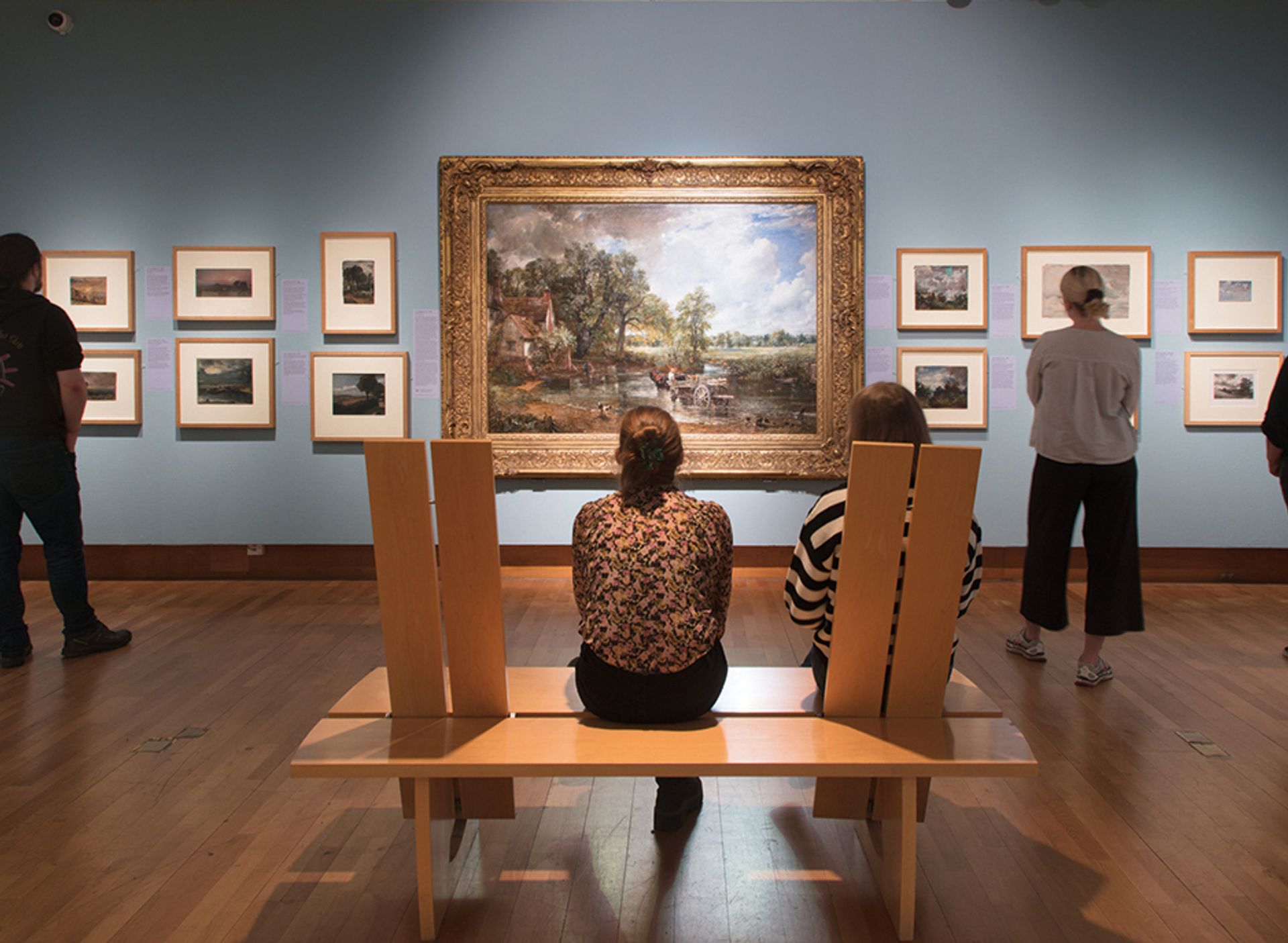
John Constable, The Hay Wain (1821), at Bristol Museum & Art Gallery Constable: © National Gallery, London. Photo: © Jamie Woodley
Constable in Bristol
John Constable, The Hay Wain (1821)
Bristol Museum & Art Gallery until 1 September
Bristol Museum & Art Gallery has put The Hay Wain at the heart of a full-scale exhibition, Truth to Nature, featuring more than 80 works on the theme of landscape, from Jacob van Ruisdael in the early 17th century to the present day. Constable’s evergreen, genre-defining canvas anchors the show on the lower floor of the gallery, flanked by a set of the artist’s oil sketches on loan from the Victoria and Albert Museum, in a traditional, painting-focused, space. As the show, spread across three galleries, rises up through the building it broadens in approach, taking in works by Ivon Hitchens, Peter Lanyon and the Bristol-born Richard Long’s Delabole Bristol Slate Circle (1997).
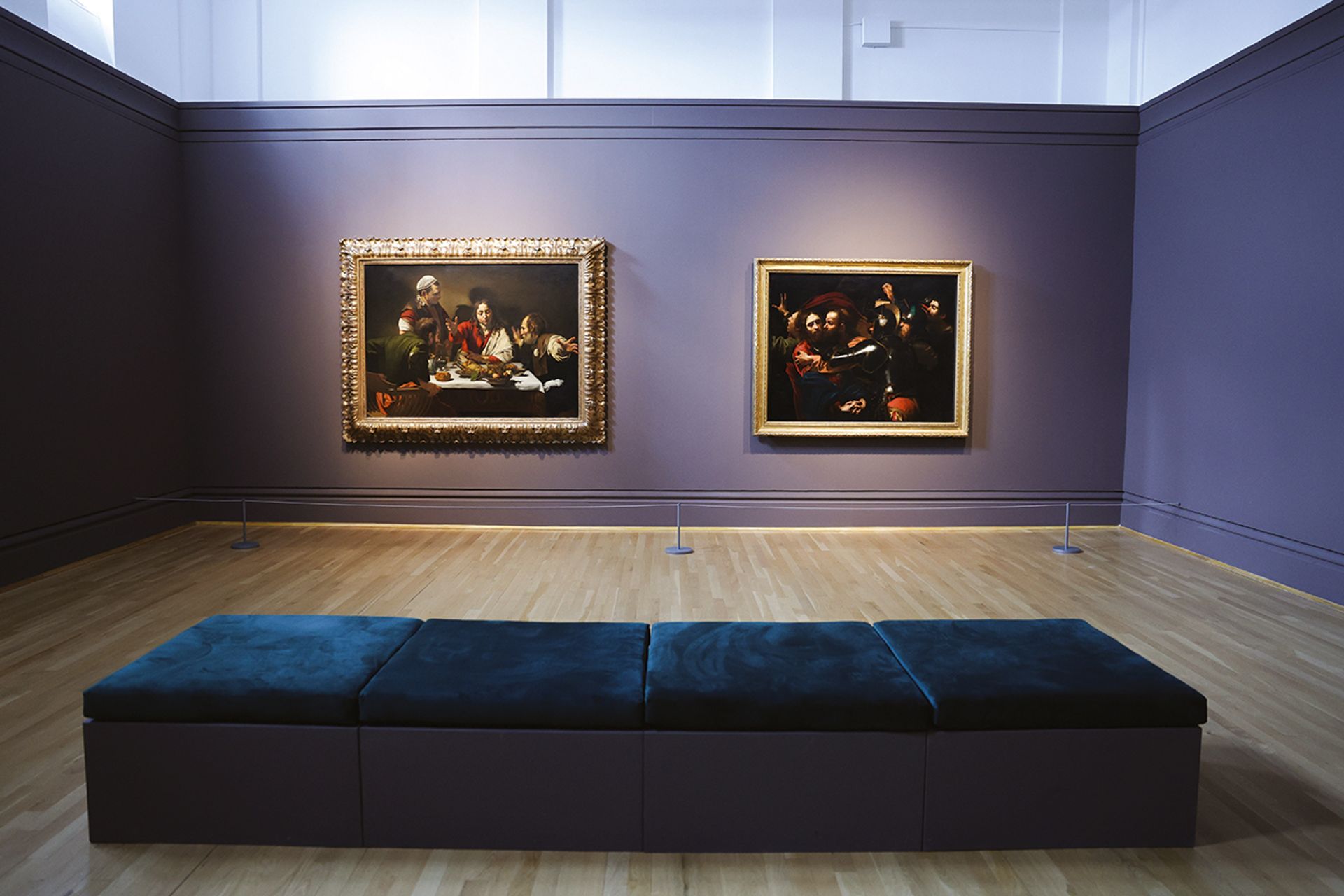
Michelangelo Merisi da Caravaggio, The Supper at Emmaus (1601), left, and The Taking of Christ (1602), at Ulster Museum Emmaus: © National Gallery, London. Taking of Christ , © Jesuit Fathers and the National Gallery of Ireland. Photo: Kelvin Boyes © Press Eye Ltd
Caravaggio in Belfast
Michelangelo Merisi da Caravaggio, The Supper at Emmaus (1601)
Ulster Museum, until 1 September
Anne Stewart, senior curator of art at the Ulster Museum, always had it in mind to show the on-loan The Supper at Emmaus in a room with natural light, as she was interested “in trying to replicate, or even mirror, Caravaggio’s use of light”. That plan was reinforced when the Jesuit Fathers and the National Gallery of Ireland, in Dublin, lent a companion Caravaggio, The Taking of Christ (1602), to hang next to it. Both canvases were painted for the Roman palace of the artist’s patron Ciriaco Mattei and the double loan has been hailed as a “north-south-east-west” moment of successful collaboration between Belfast, Dublin and London.
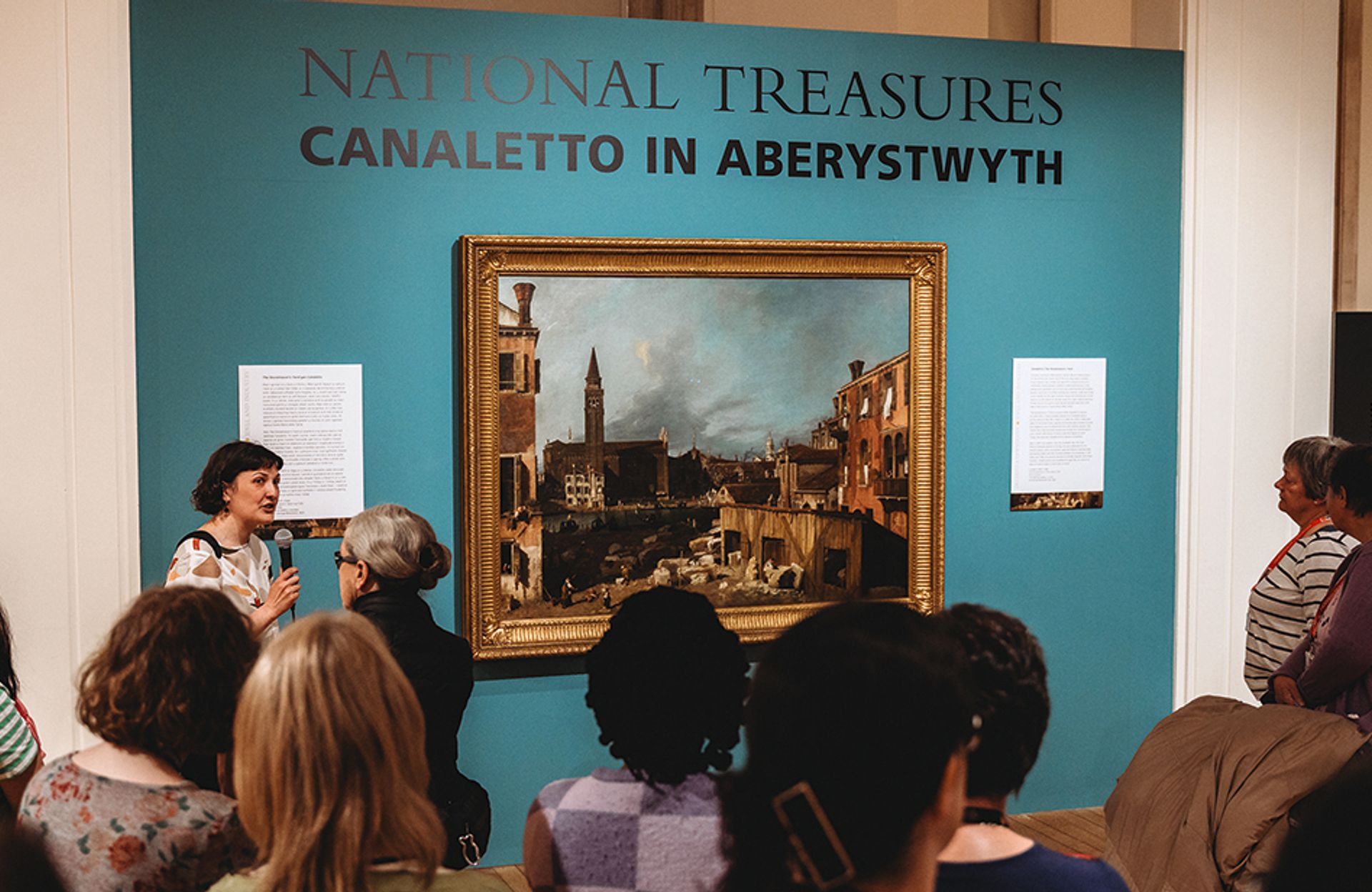
Giovanni Antonio Canal (Canaletto), The Stonemason’s Yard (around 1725), on exhibition at the National Library of Wales Canaletto: © National Gallery, London. Photo: © Angharad Bache
Canaletto in Aberystwyth
Giovanni Antonio Canal (Canaletto), The Stonemason’s Yard (around 1725)
Gregynog Gallery, National Library of Wales, until 7 September
More than 80 years after The Stonemason’s Yard, along with the bulk of the National Gallery’s collection, was moved to Wales to escape the wartime bombing of London, Canaletto’s prized canvas has made an emotion-tinged return to Gregynog Hall, Aberystwyth, where the collection was housed before being stored underground at locations including the Manod slate mines. It forms the centre of an exhibition exploring the National Library of Wales’s collection of Welsh landscape art, including works by J.M.W. Turner, Richard Wilson, Graham Sutherland and Mary Lloyd Jones.
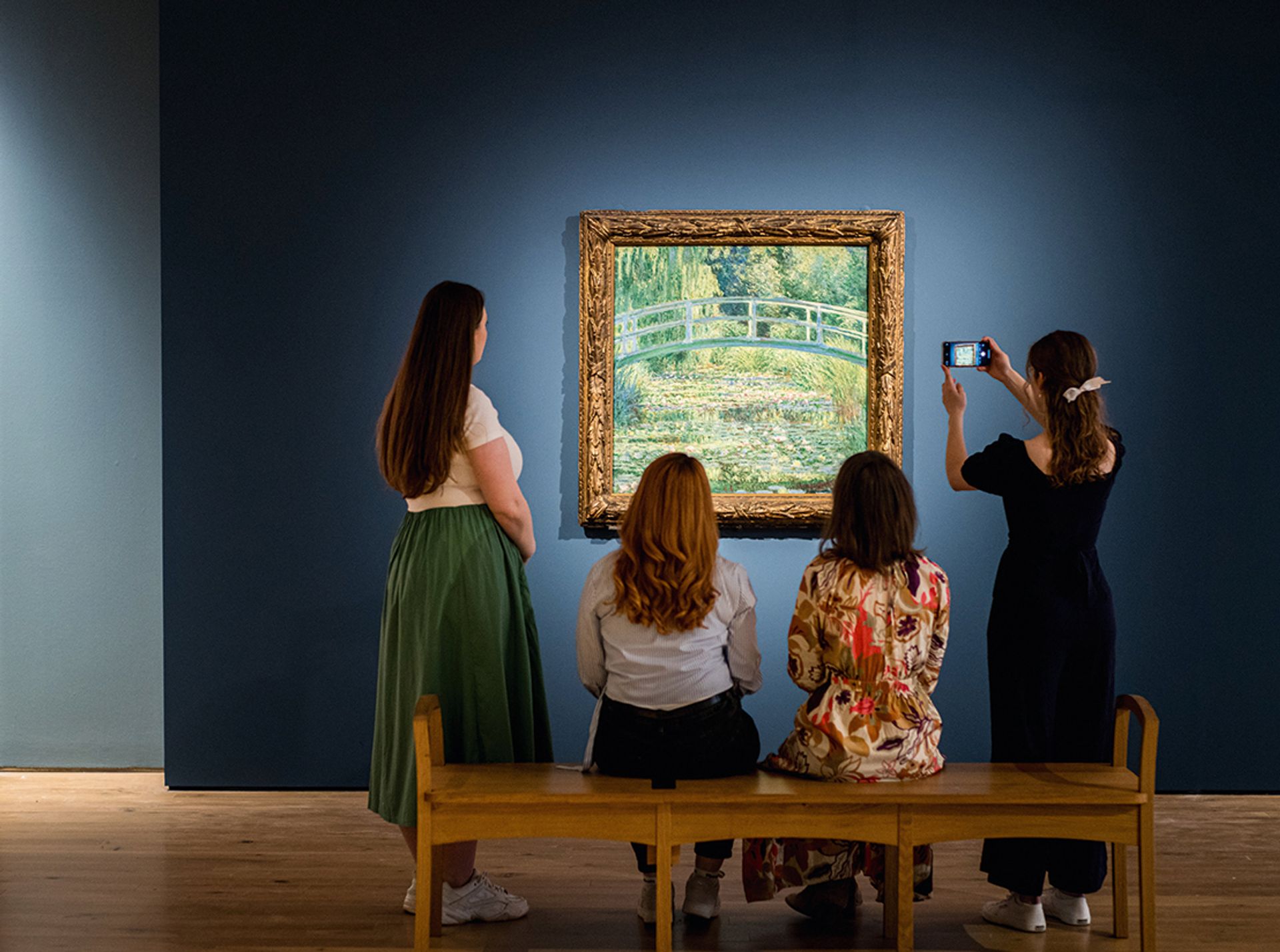
Claude Monet, The Water-Lily Pond (1899), at York Art Gallery Monet: © National Gallery, London. Photo: Charlotte Graham © 2024 BOKEH Ltd
Monet in York
Claude Monet, The Water-Lily Pond (1899)
York Art Gallery, until 8 September
York Art Gallery is using one of Monet’s best-known works, painted in the artist’s garden at Giverny, as the springboard for a large loan exhibition examining the birth of en plein air painting, and the influence of Japanese prints on Monet and the Impressionists in general. The museum has commissioned a related work from the contemporary artist Michaela Yearwood-Dan which, Whitlum-Cooper says, has been a huge success. The organisers have also planted a flower meadow, in honour of Monet and Giverny, in the museum gardens, where they will run drawing lessons and other activities. “You can imagine how [the flower meadow] is going to bloom and change over the summer,” Whitlum-Cooper says.
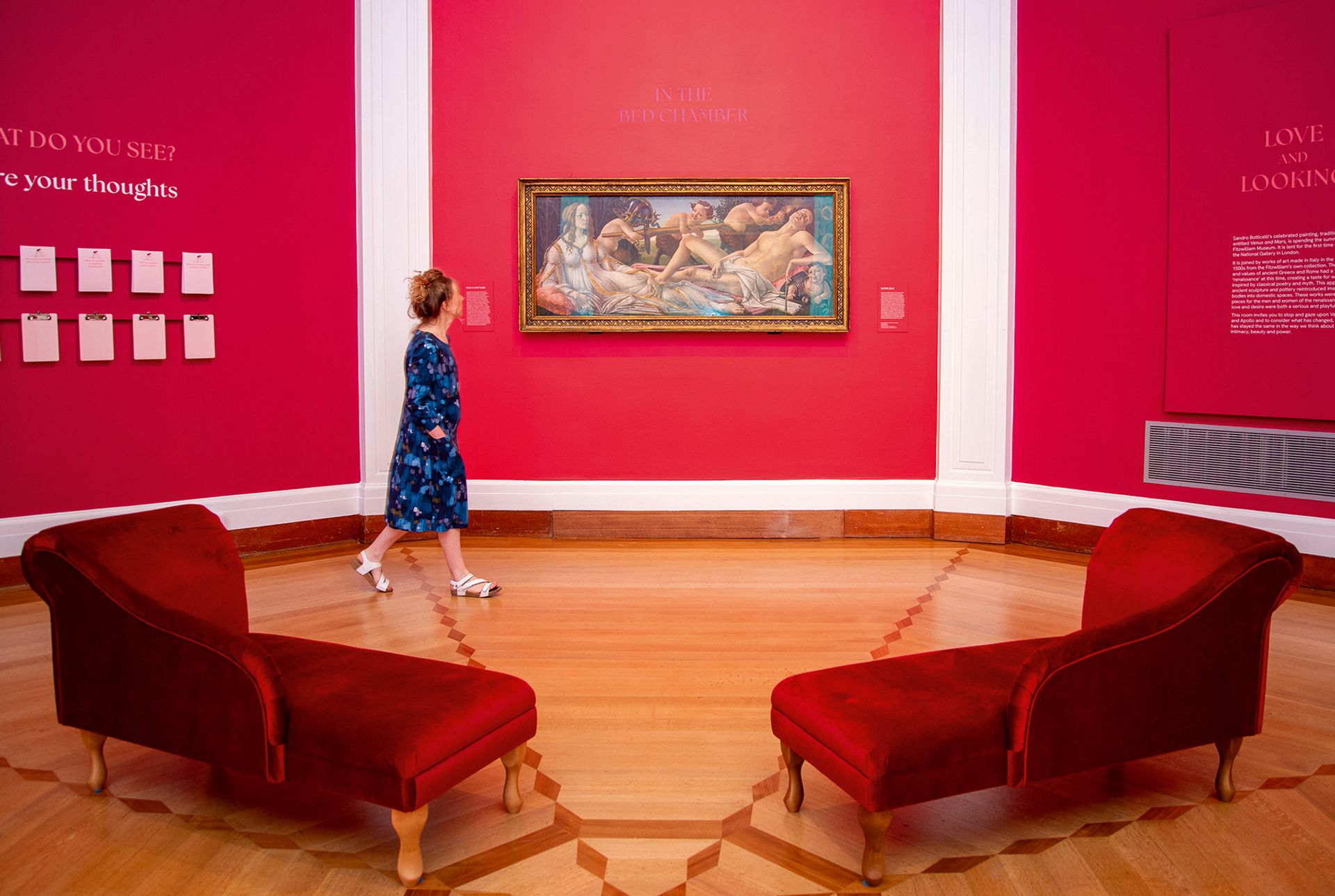
Sandro Botticelli, Venus and Mars (around 1485), at the Fitzwilliam Museum, Cambridge Botticelli: © National Gallery, London. Photo: © The Fitzwilliam Museum, University of Cambridge
Botticelli in Cambridge
Sandro Botticelli, Venus and Mars (around 1485)
Fitzwilliam Museum, until 10 September
This is the first time since its acquisition in 1874 that Botticelli’s much-admired painting Venus and Mars has travelled from the National Gallery. It is on show, in the Fitzwilliam’s Octagon Gallery (painted fuchsia), with works from the Cambridge museum’s collection, including Titian’s Venus and Cupid with a lute-player (1555-65), at the heart of a show that analyses sex and power, gender and the body through Italian art of the 1400s and 1500s. The Botticelli has two red velvet chaises longues placed in front of it, matching the languid poses of the gods it depicts, to encourage long looking. Whitlum-Cooper is struck by how the Fitzwilliam curators have brought out the intimacy of a picture—normally seen in the vaulting spaces of the Sainsbury Wing of the National Gallery—that was likely connected to a wedding and that would have hung in a semi-private, semi-public bedchamber. “They’ve really leaned into that,” she says.
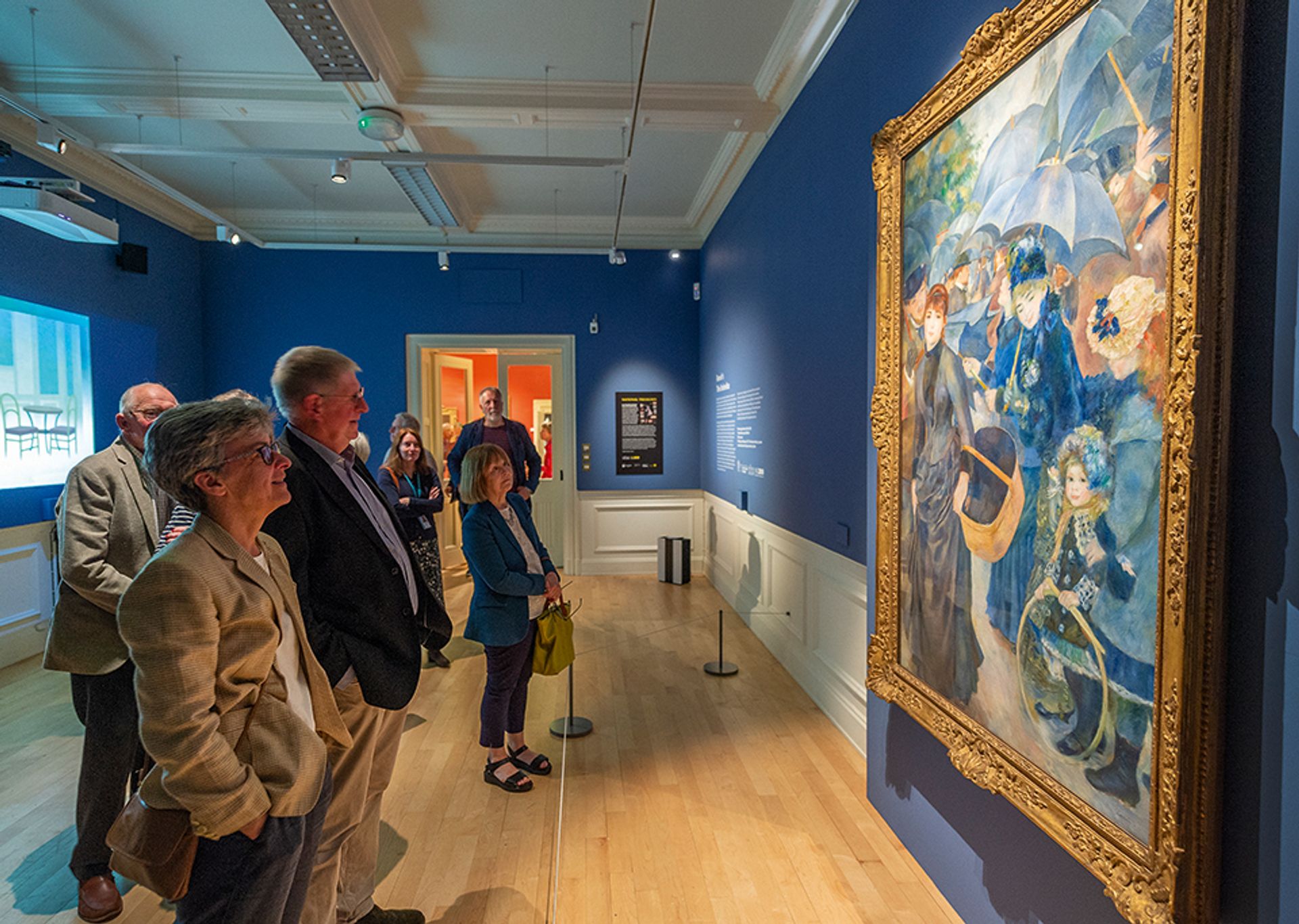
Pierre-Auguste Renoir, The Umbrellas (around 1881-86), at Leicester Museum & Art Gallery Renoir: © National Gallery, London. Photo: © Ian Davis/LCQPB
Renoir in Leicester
Pierre-Auguste Renoir, The Umbrellas (around 1881-86)
Leicester Museum & Art Gallery, until 1 September
Renoir’s enormously popular canvas has been given an immersive treatment at Leicester Museum & Art Gallery, which has commissioned a family-friendly animation, inspired by the painting, tailored to the museum’s summer visitors and produced by going out to tender in Leicester’s thriving digital hub. The animation, which depicts a rainy day on a Parisian street, with the soundscape of rain, carriages and bustling pedestrians, focuses on the character of the little girl. Visitors are invited to watch the animation first—”it brings The Umbrellas to life,” Whitlum-Cooper says—and then to study the painting for an equivalent amount of time.
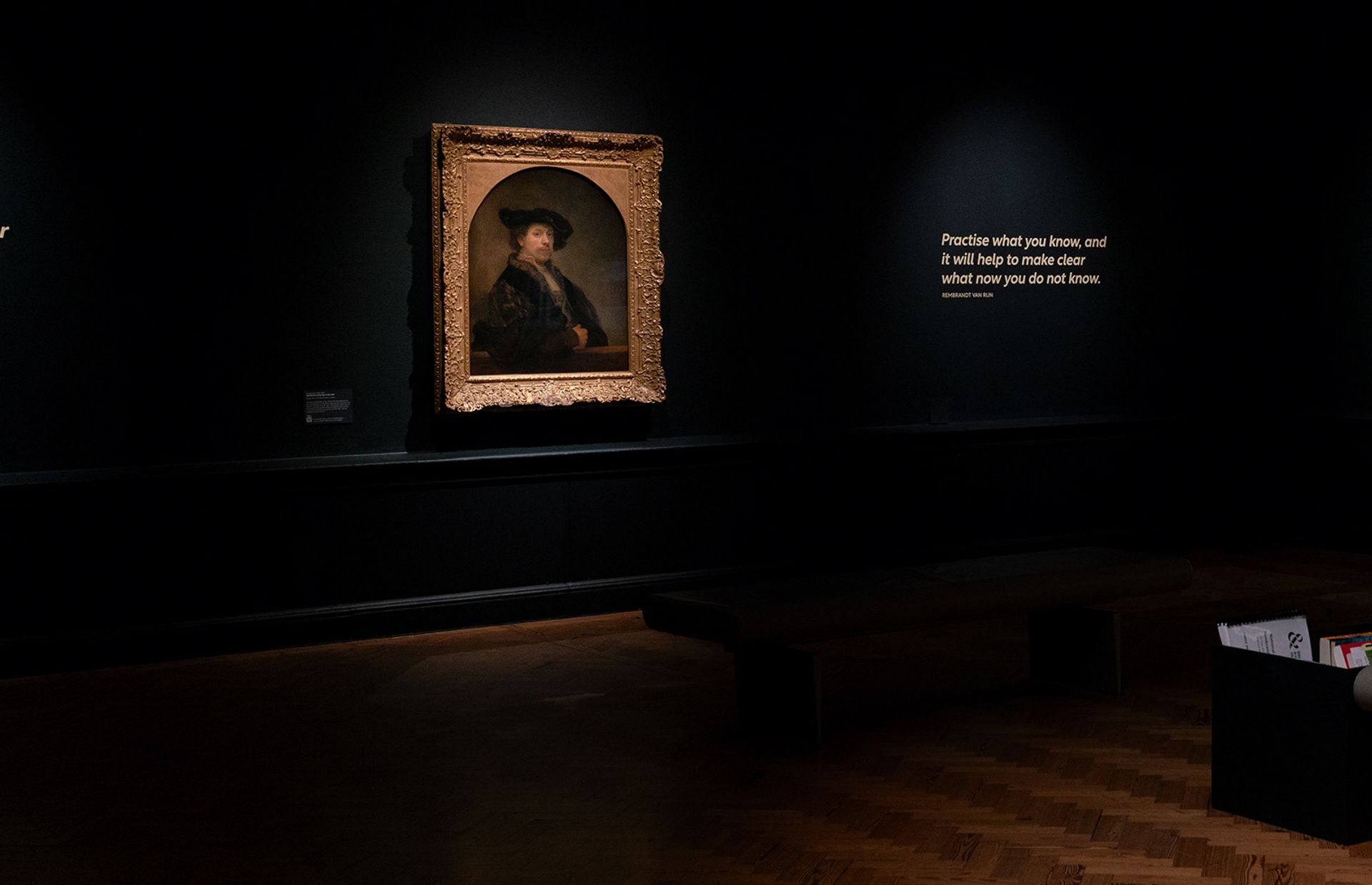
Rembrandt Van Rijn, Self Portrait at the Age of 34 (1640) at the Brighton Museum & Art Gallery Rembrandt: © National Gallery, London. Photo: © Alejandra Carles-Tolra
Rembrandt in Brighton
Rembrandt Van Rijn, Self Portrait at the Age of 34 (1640)
Brighton Museum & Art Gallery, until 4 August
Rembrandt’s Self-Portrait at the age of 34 is on show at Brighton Museum & Art Gallery alongside Hey, Rembrandt!, a project where the museum has teamed up with the charity Photoworks. The photographer Alejandra Carles-Tolra has mentored 14 local teenagers, members of a photography group, to create their own self-portraits in response to the Old Master painting. It is a show, Whitlum-Cooper says, “that has involved a lot of collaboration with our learning department”. The teenage photographers, she says, came to the National Gallery to see how the museum works behind the scenes and to think how they might look at the age of 34.
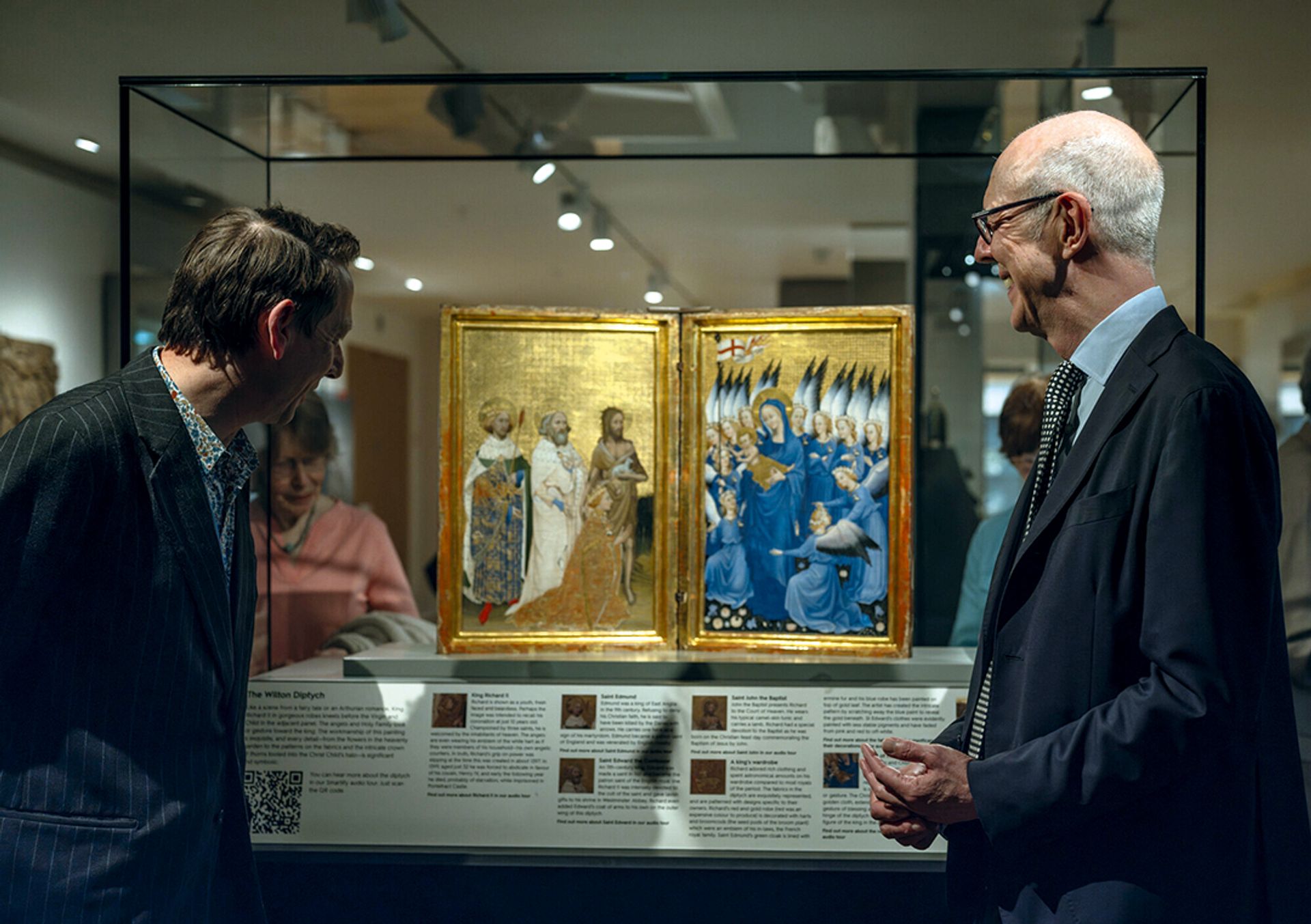
The Wilton Diptych (around 1395-99) on exhibition at the Ashmolean Museum, Oxford Diptych: © National Gallery, London. Photo: Ellie Atkins © Ashmolean Museum, University of Oxford
The Wilton Diptych in Oxford
The Wilton Diptych (around 1395-99)
Ashmolean Museum, until 1 September
The unique late 14th-century gilded ‘Wilton Diptych’, made for the private use of King Richard II (and later in the collection of King Charles I), hangs at the National Gallery with a collection of gold-ground early Italian paintings. At the Ashmolean, it is being exhibited at the England Room, with other royal pieces in gold including the celebrated ninth-century ‘Alfred Jewel’and an early 16th-century ‘Cloth of Gold’, the funeral pall of King Henry VII. “It looks incredible” in the Ashmolean, Whitlum-Cooper says. “Because it’s the first time it’s travelled, it has had to have a new display case made. The actual case is darker. The diptych sits a little higher and it seems both more immediate and more imposing, intimate and impressive at the same time.”
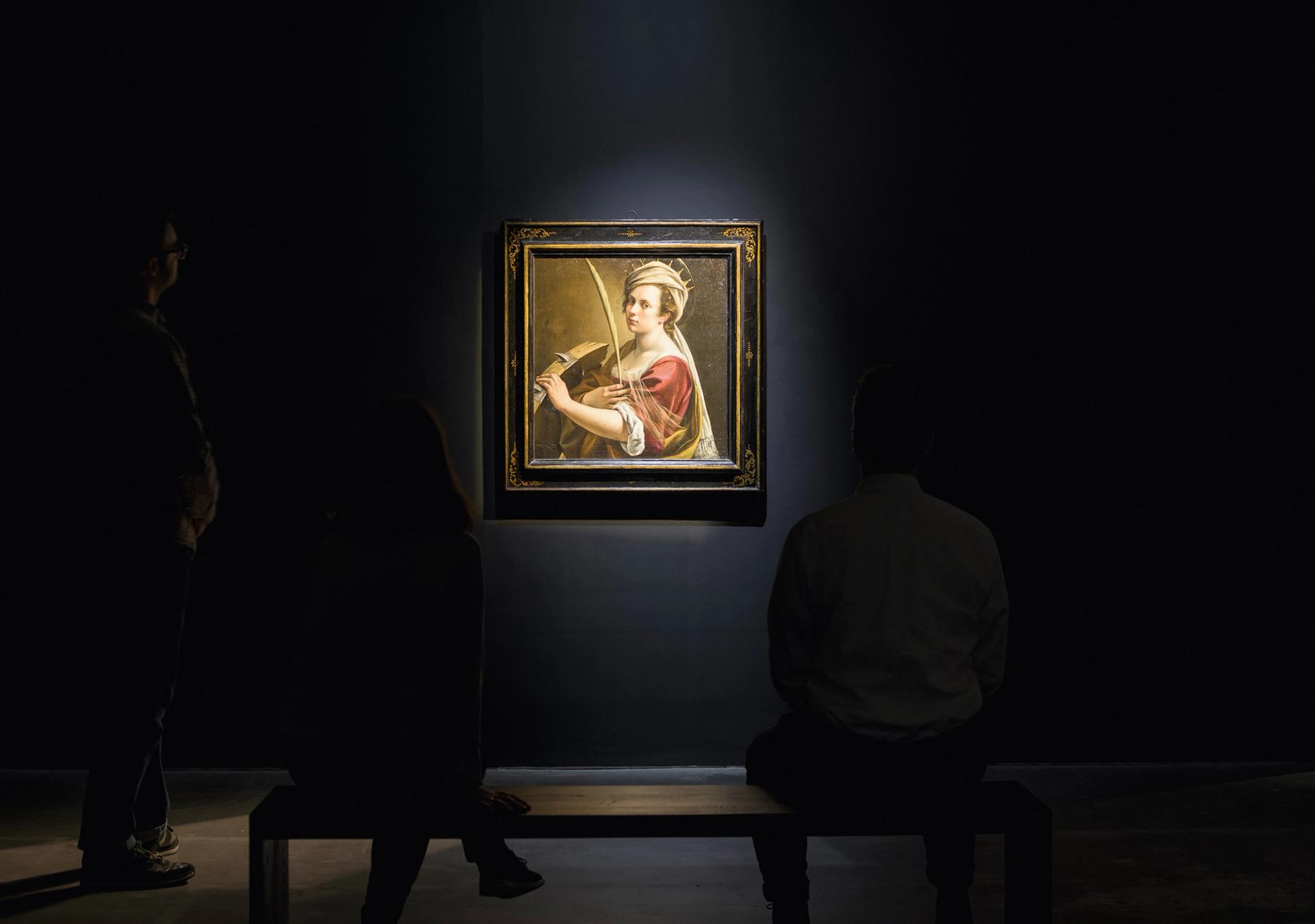
Artemisia Gentileschi, Self-portrait as Saint Catherine of Alexandria (around 1615-17), on show at the Ikon Gallery, Birmingham Artemisia: © National Gallery, London. Photo © Tom Bird
Artemisia in Birmingham
Artemisia Gentileschi, Self-portrait as Saint Catherine of Alexandria (around 1615-17)
Ikon Gallery, until 8 September
Artemisia’s self-portrait, one of the most vaunted acquisitions in the National Gallery’s recent history, has been placed at the Ikon at the centre of Mirror Martyr Mirror Moon, an exhibition created in response to the painting by the contemporary Irish artist Jesse Jones. Jones researched the life of St Catherine of Alexandria for the exhibition, which includes a film based on the landscape around Mount Sinai, where the body of St Catherine is said to have been mystically elevated following her martyrdom in the fourth century. “The space is animated with great semi-transparent drapes,” Whitlum-Jones says, “on to which Jones has images projected and dances and movements. It’s a really immersive contemporary installation. Everyone who has seen it has been blown away.”
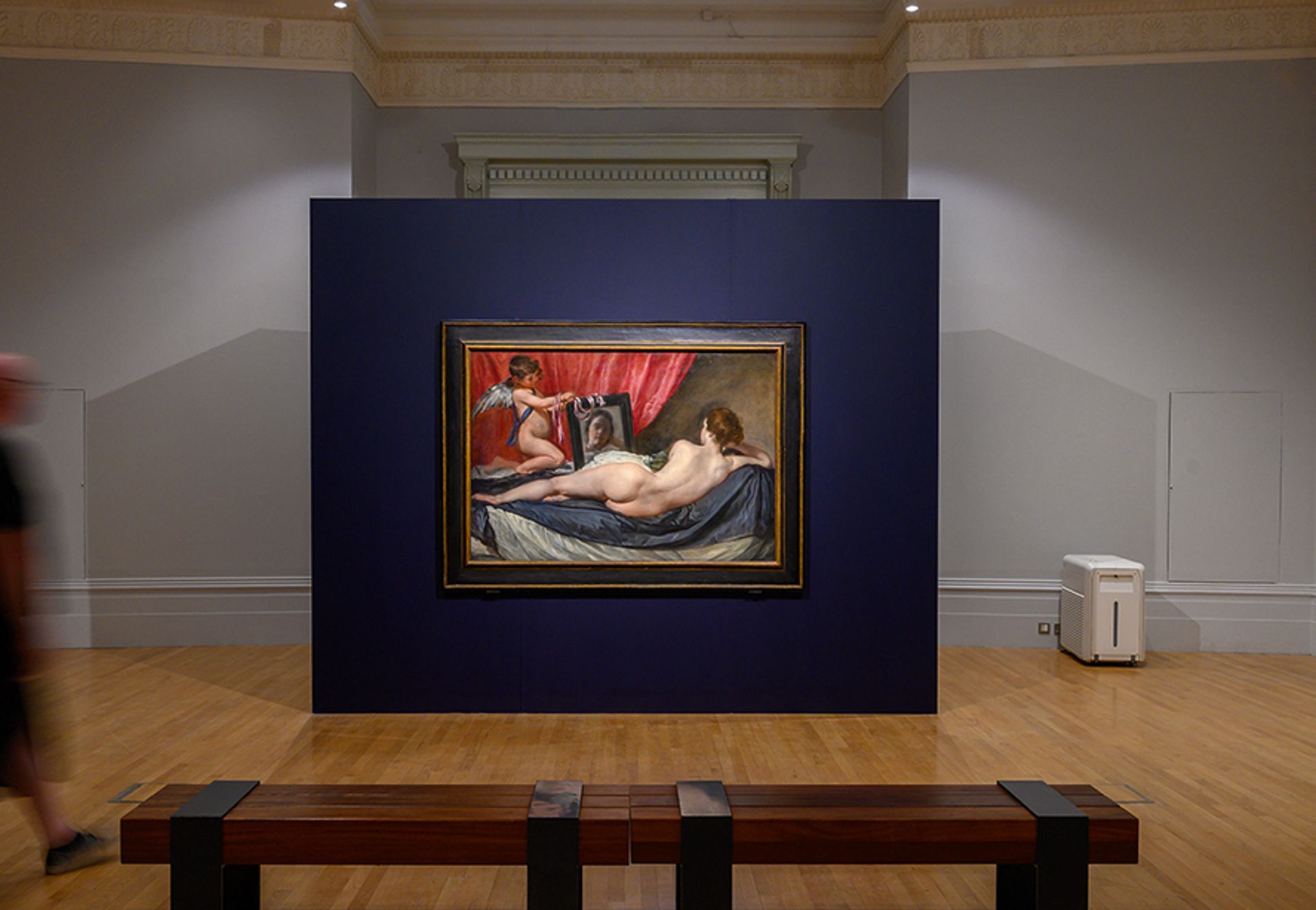
Diego Velázquez, The Toilet of Venus (‘The Rokeby Venus’, around 1647-51), on show at the Walker Art Gallery, Liverpool Velázquez: © National Gallery, London. Photo: © Pete Carr
Velázquez in Liverpool
Diego Velázquez, The Toilet of Venus (‘The Rokeby Venus’, around 1647-51)
Walker Art Gallery, until 26 August
Diego Velázquez’s “Rokeby Venus”, one of the National Gallery’s most newsworthy works, was acquired following a highly publicised fundraising appeal, and has since been at the centre of women’s voting rights and climate protests. In a challenge to a history of seeing this famous nude through the male gaze, the Venus is set alongside works by women and non-binary artists in the Walker’s collection, including Ethel Walker’s The Spanish Gesture, photographs by René Matic and Zanele Muholi, and Harriet Hosmer’s Puck.
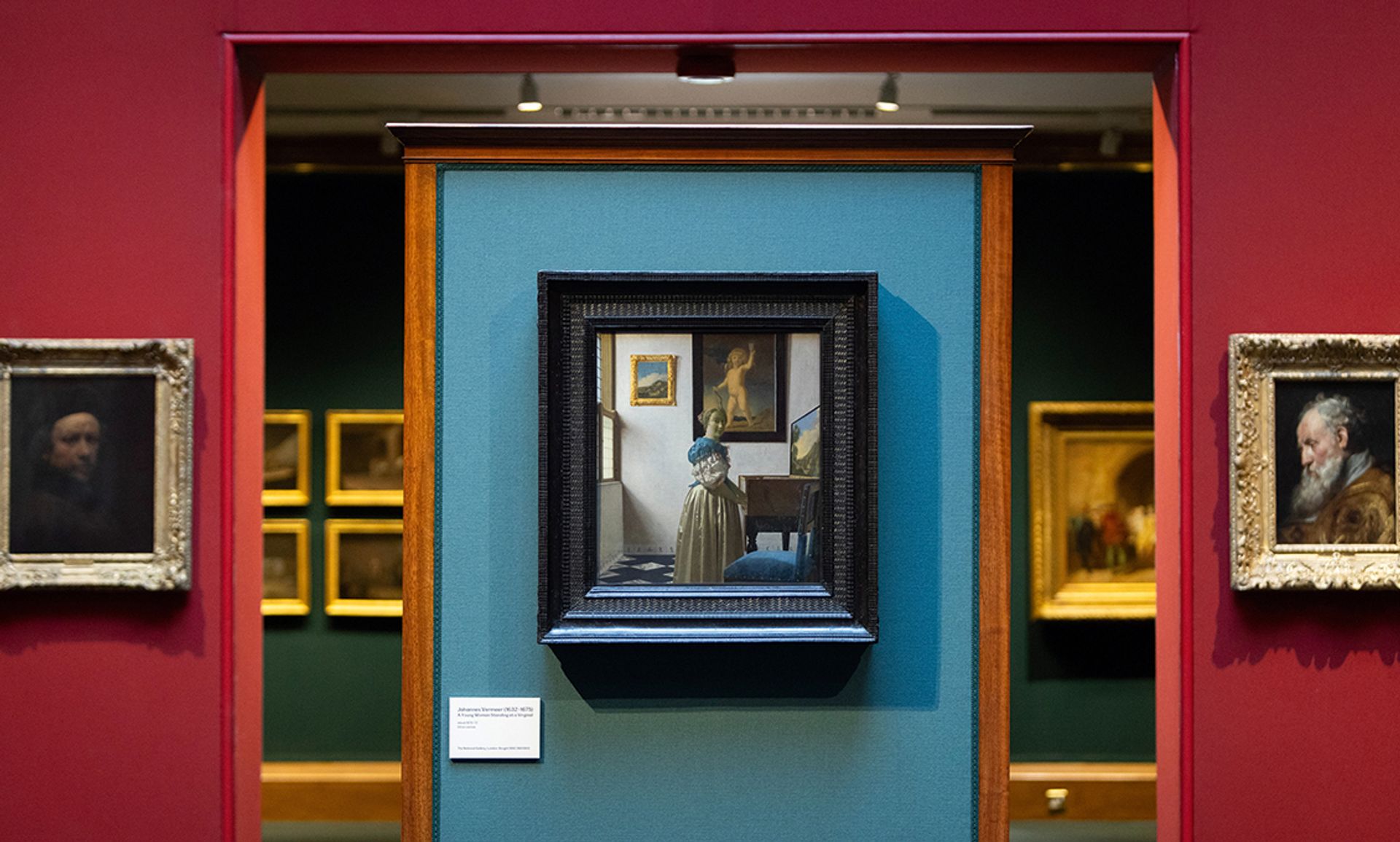
Johannes Vermeer, A Young Woman Standing at a Virginal (around 1670-72), on show at the Scottish National Gallery Vermeer: © National Gallery, London. Photo: © Stuart Armitt
Vermeer in Edinburgh
Johannes Vermeer, A Young Woman Standing at a Virginal (around 1670-72)
Scottish National Gallery, until 8 September
Vermeer’s late-period A Young Woman Standing at a Virginal has been boldly placed in a large gallery at the heart of the museum’s permanent collection, one rich in Dutch 17th-century art. The intimately scaled painting hangs on its own stand, at the centre of the space, allowing it to be viewed in the context of the artist’s earlier, and much larger, painting Christ in the House of Martha and Mary (around 1654-55), which has been in the Edinburgh collection since 1927.








No Comment! Be the first one.